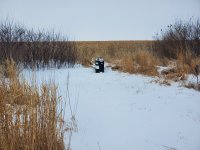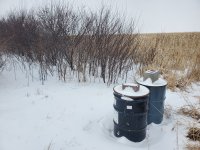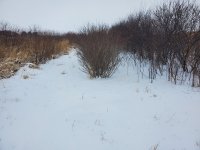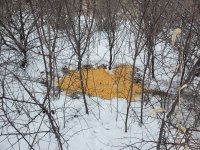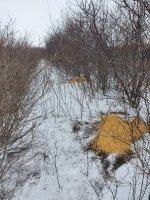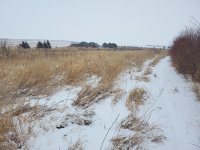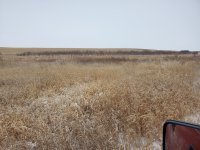remy3424
Well-known member
We are testing our cover/habiat now. Hope those birds found good roosting spots last night, -14° here, guessing it is even a bit colder in the Dakotas. We have our first real snow of the season on the ground now, just a couple inches. No wind, cold enough it is loose, not packed, birds can dig through if needed to find food. I hope our food plots (grain sorghum) are still providing. I haven't walked out and checked them, I have a feeling they are bare with the bird population we have. The extended forecast shows even colder temps coming next week. This winter is says "not so fast, your aren't getting off that easy!" With a couple 60° days in late January, I was kinda hoping winter would wrap-up early...that thinking might give us winter thru March.
I have 2 steel drums full of shelled corn in placed in a hedgerow next to 18 acres of switchgrass....just incase things got bad. This late into the winter, I am thinking about putting out 10 gallons every week (maybe twice a week once they are on it), as that corn will not last the summer in those drums. A bit unsure about feeding them in these "not so extreme" conditions. I know that frickin bird flu could be out there and feeding will bring a lot of birds together. And then I don't want them to get relying on that food source....but we should be on the down side of the cold and snow season. 10 gallons (even 20) a week, will get us in to milder weather, and get that corn used-up. What would any of you fellas who create habitat do in this situation? This would be the first time feeding, that I will not need to walk in the 3 eighths a mile to do this, the walk is not fun busting though snow.
I have 2 steel drums full of shelled corn in placed in a hedgerow next to 18 acres of switchgrass....just incase things got bad. This late into the winter, I am thinking about putting out 10 gallons every week (maybe twice a week once they are on it), as that corn will not last the summer in those drums. A bit unsure about feeding them in these "not so extreme" conditions. I know that frickin bird flu could be out there and feeding will bring a lot of birds together. And then I don't want them to get relying on that food source....but we should be on the down side of the cold and snow season. 10 gallons (even 20) a week, will get us in to milder weather, and get that corn used-up. What would any of you fellas who create habitat do in this situation? This would be the first time feeding, that I will not need to walk in the 3 eighths a mile to do this, the walk is not fun busting though snow.

